Standard [CURRENT]
ASTM E 2139:2025
Standard Test Method for Same-Different Test
- Publication date
- 2025
- Original language
- English
- Pages
- 15
- Publication date
- 2025
- Original language
- English
- Pages
- 15
- DOI
- https://dx.doi.org/10.1520/E2139-25
Product information on this site:
Quick delivery via download or delivery service
Buy securely with a credit card or pay upon receipt of invoice
All transactions are encrypted
Short description
1.1 This test method describes a procedure for comparing two products. 1.2 This test method is suitable for homogenous products (like pulp-free beverages) and not suitable for variable products (like pizza slices or chocolate chip cookies) where variation in serving can cause "false" differences. 1.3 This test method is sometimes referred to as the simple-difference test. 1.4 A same-different test determines whether two products are perceived to be different overall. The same-different test is a forced choice test. 1.5 The procedure of the test described in this test method consists of presenting one pair of samples or two pairs (one matched pair and one unmatched pair) to each assessor. The presentation of more than two pairs would require different statistical treatment and it is outside of the scope of this test method. 1.6 This test method is not attribute-specific, unlike the directional difference test. 1.7 This test method is not intended to determine the magnitude of the difference; however, statistical methods may be used to estimate the size of the difference. 1.8 This test method may be chosen over the triangle or duo-trio tests where sensory fatigue or carryover are a concern, or where a simpler task is needed. 1.9 This test method does not describe the Thurstonian modeling approach to this test. 1.10 Testing for similarity is outside the scope of this document. 1.11 This standard may involve hazardous materials, operations, and equipment. This standard does not purport to address all of the safety concerns, if any, associated with its use. It is the responsibility of the user of this standard to establish appropriate safety, health, and environmental practices and determine the applicability of regulatory limitations prior to use. 1.12 This international standard was developed in accordance with internationally recognized principles on standardization established in the Decision on Principles for the Development of International Standards, Guides and Recommendations issued by the World Trade Organization Technical Barriers to Trade (TBT) Committee.
ICS
03.100.50
DOI
https://dx.doi.org/10.1520/E2139-25
Also available in
Loading recommended items...
Loading recommended items...
Loading recommended items...
Loading recommended items...

